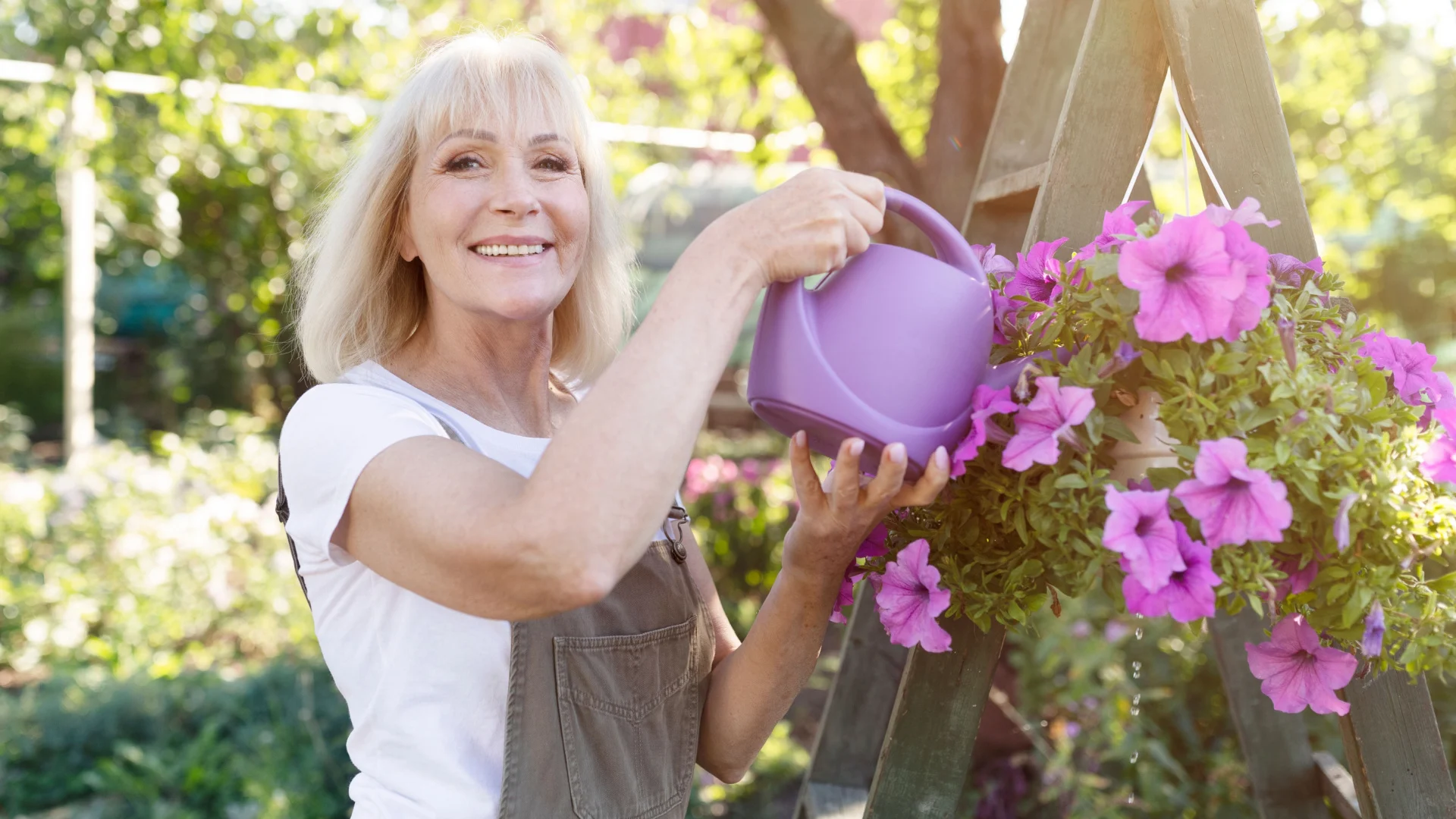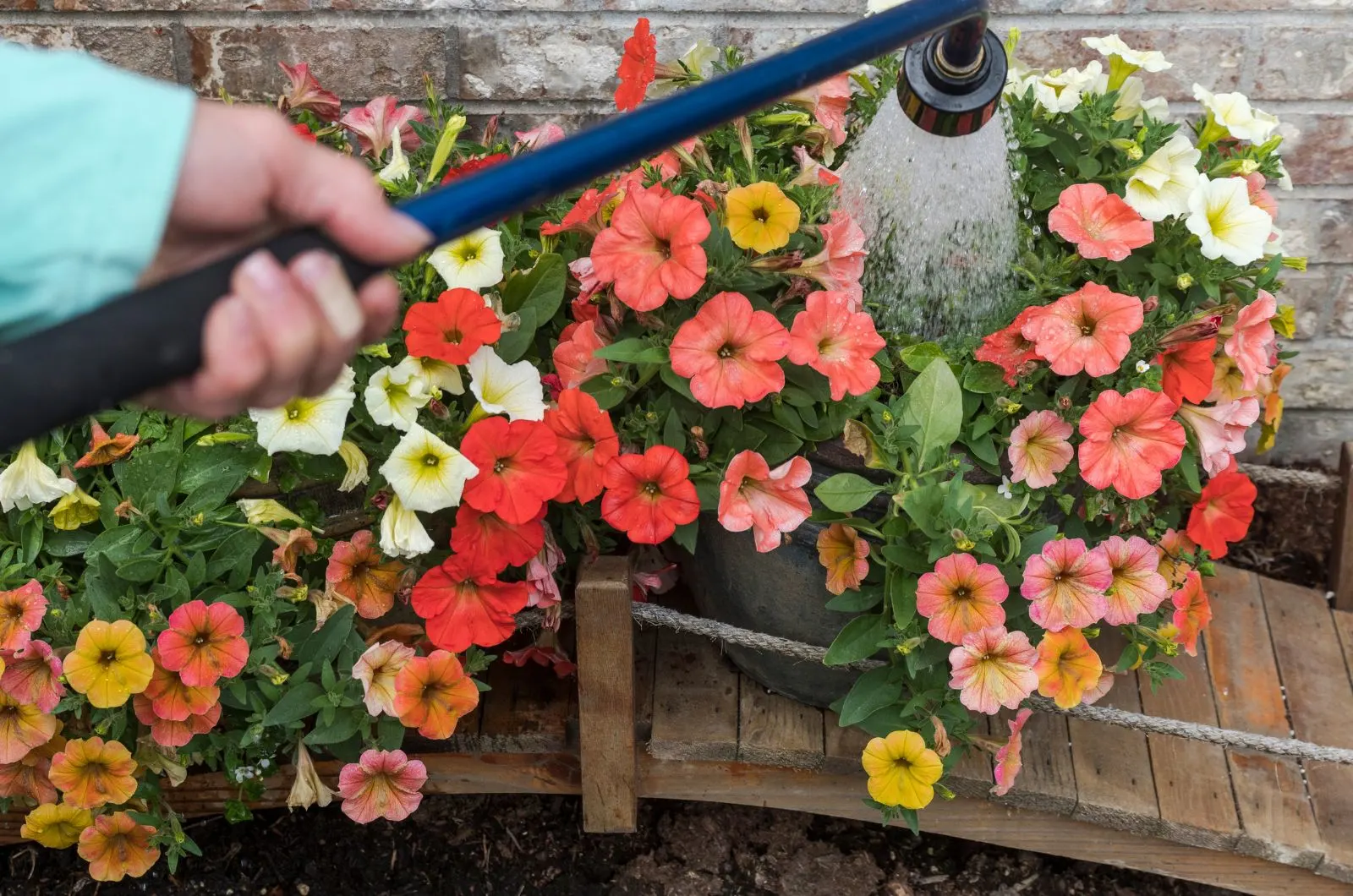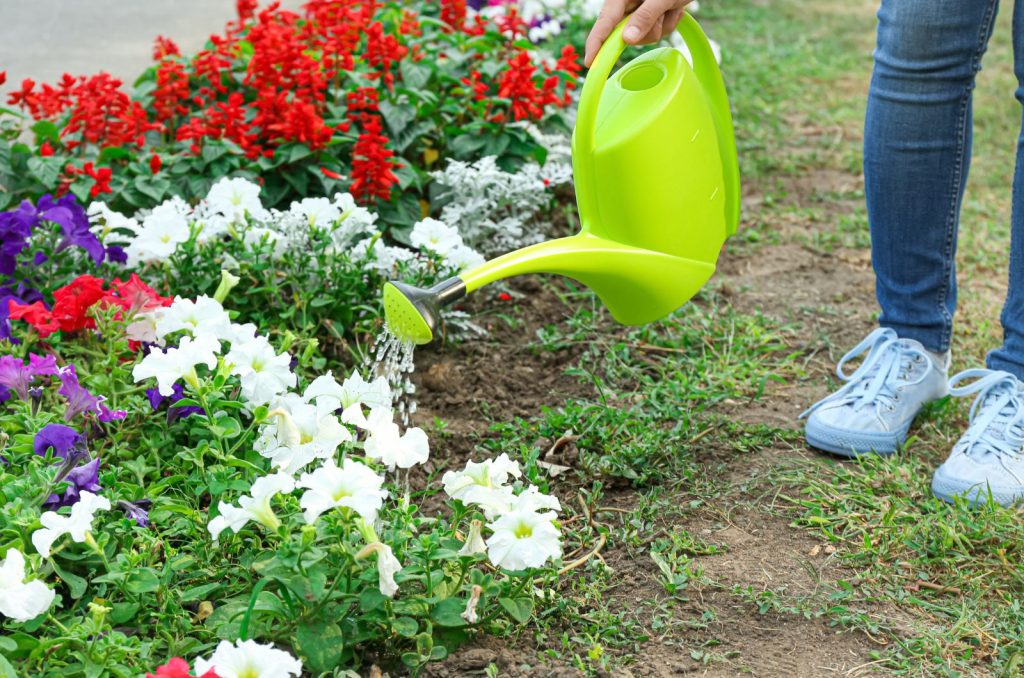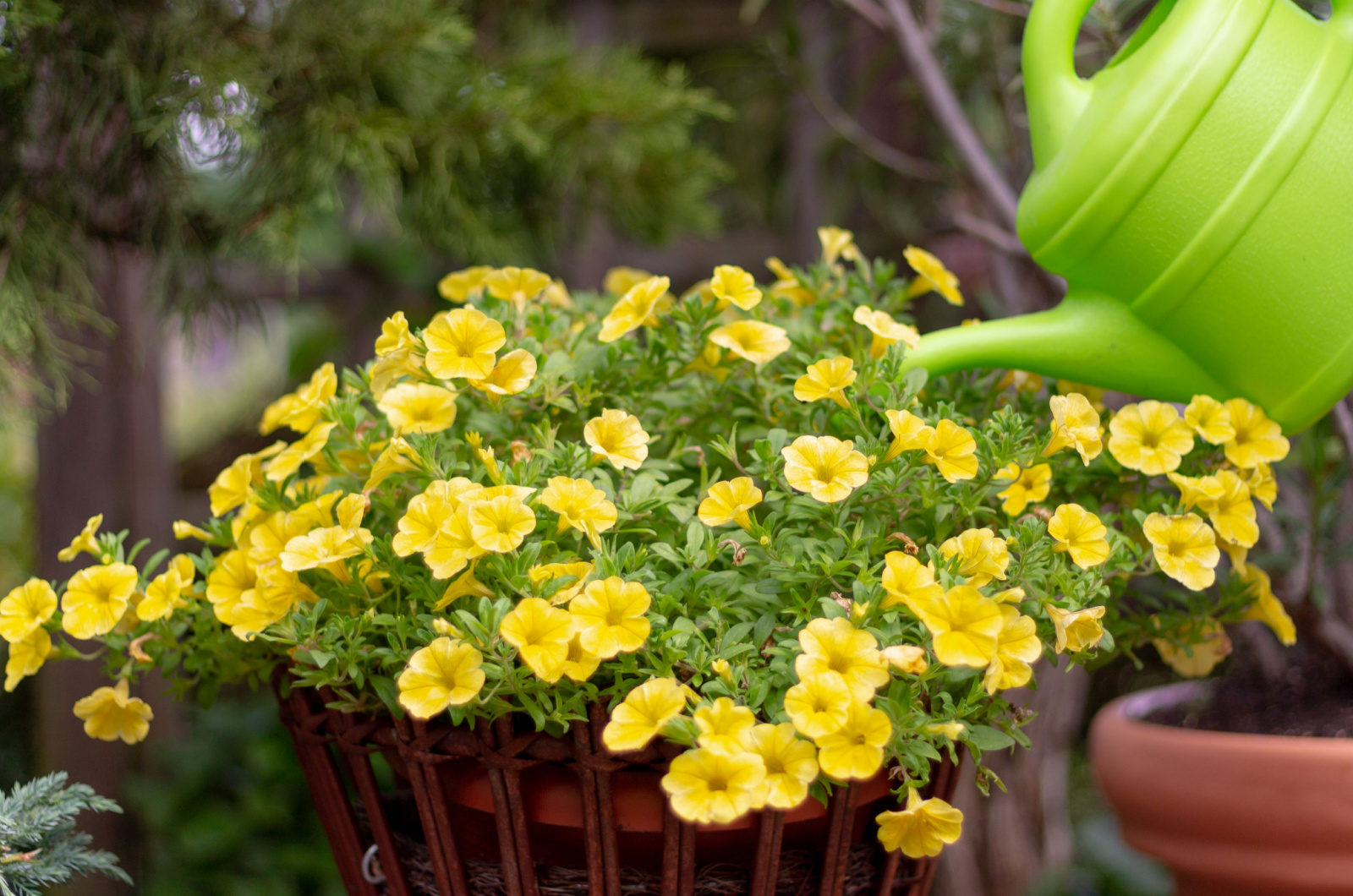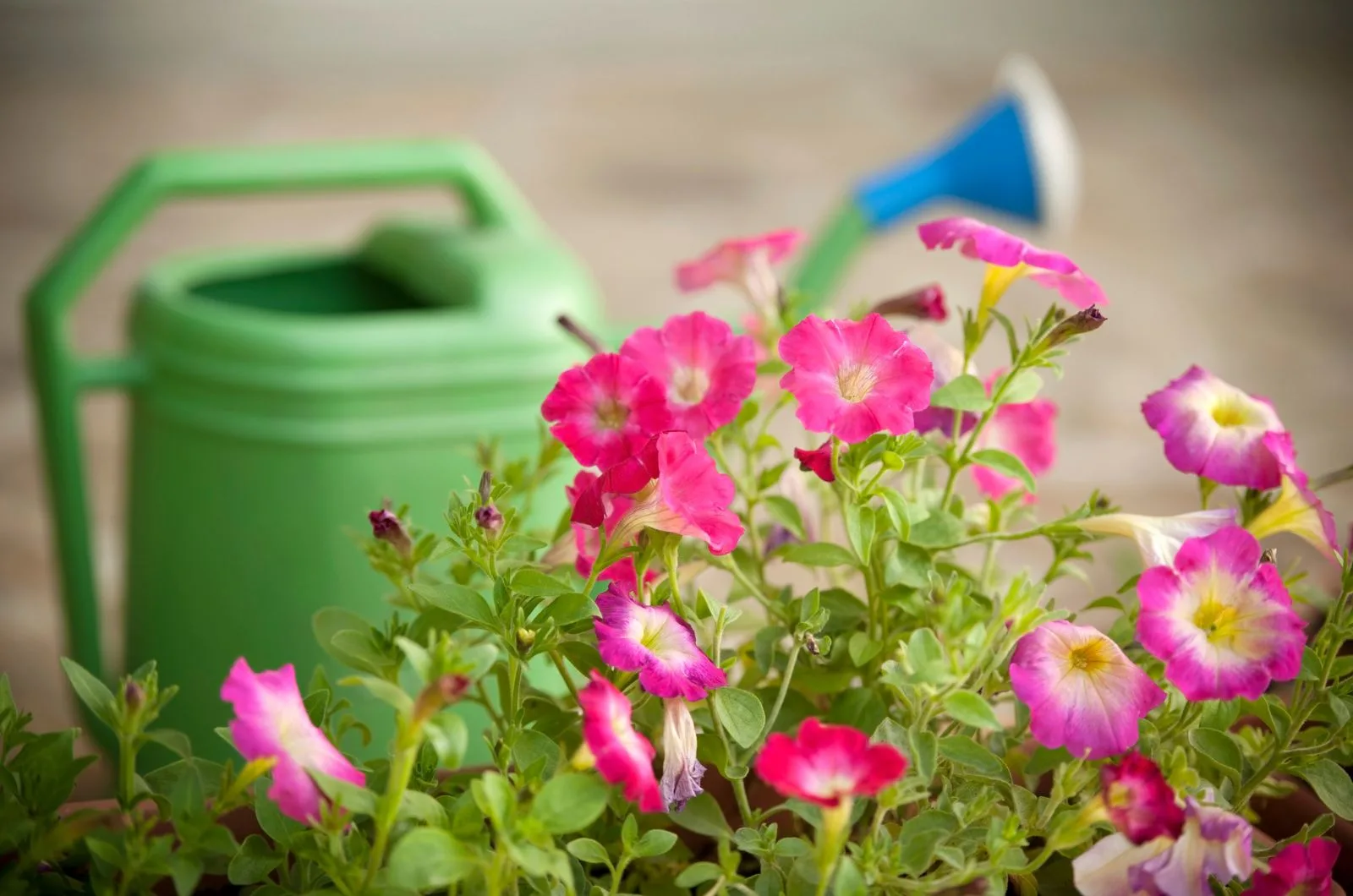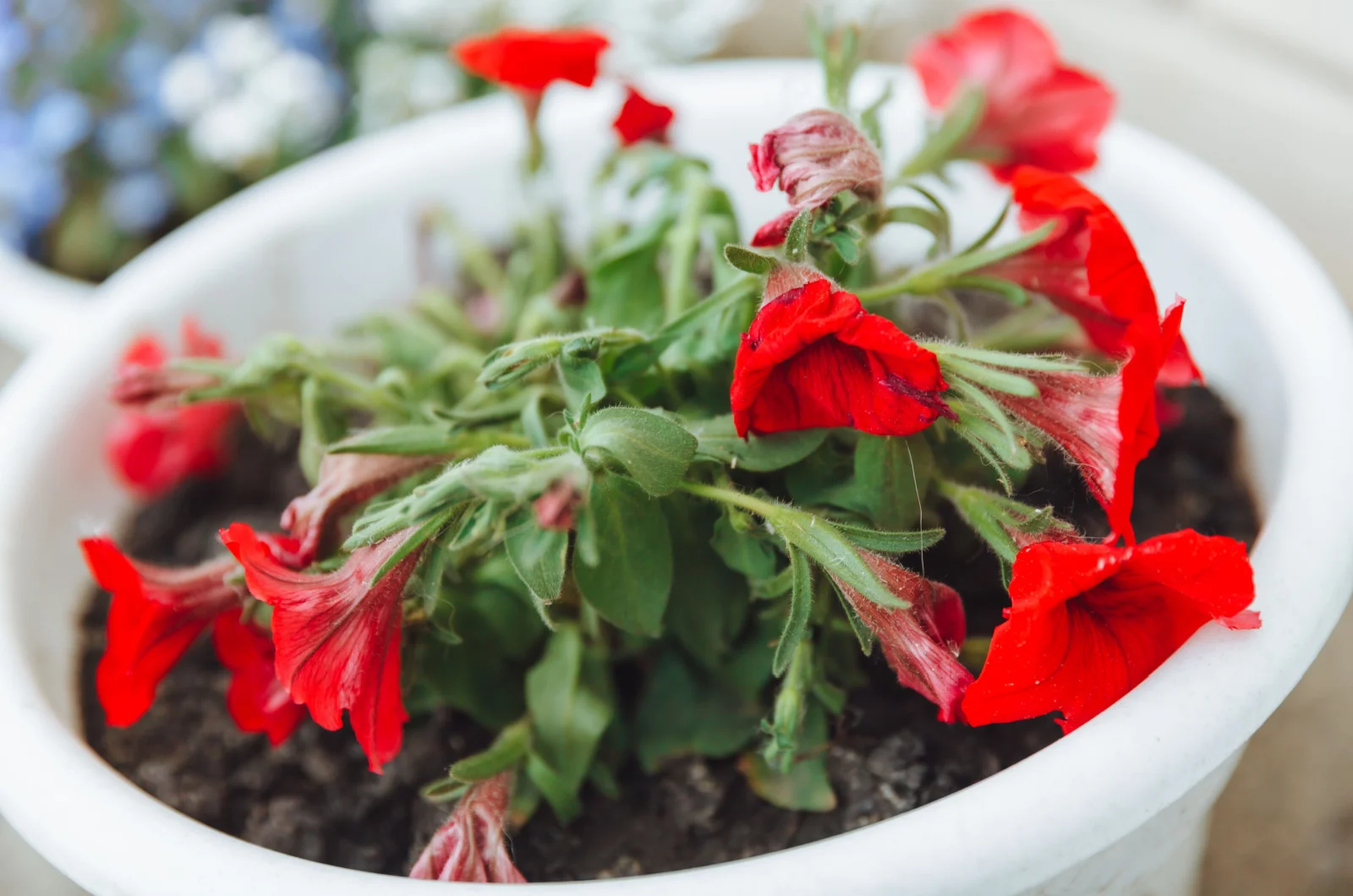The vibrant colors of petunias make for great bedding, hanging basket, and container decorations.
Yet, if you want them to reach their full potential, you have to water them the right way. That means understanding the exact amount of moisture your plants need, the frequency of watering required, and the best time to do it.
I know it’s a lot, but don’t worry! I’ll cover all these topics in the following article, so stick around!
Let’s get started!
#1 The Amount Of Water Petunias Need
Petunias need plenty of water. Periods without rainfall or supplemental irrigation that allow the soil to dry out will hinder the growth of these flowers and their blooming ability.
Instead, keep the soil consistently moist. Let it moderately dry out in between each irrigation, but that’s about it.
In general, you should water your petunias until the top 6-8 inches of the growing medium are moist. This will keep them thriving even in the hottest weather.
#2 Watering Frequency
If you want to continue landscaping with petunias, you’ll have to water them the right way so that they stay alive and produce abundant flowers.
For instance, potted petunias need a lot more moisture than in-ground ones. Here are some more tips that can help you out!
Irrigating In-Ground Petunias
In-ground petunias are the least demanding. You can water them once per week until the top 6-8 inches of the garden soil is moist.
Yet, all this depends on the weather. If it’s quite rainy, you don’t have to worry about irrigation. But if you’re experiencing a bit of a dry and hot spell, you may want to increase the frequency.
You should also pay attention to the type of soil you have. If you have heavy clay and compacted growing medium, you won’t have to irrigate your petunias as much.
Irrigating Potted Petunias
If you grow your petunias in pots and containers, be prepared to water them more often. You can get by with weekly watering when they’re young and small.
But once they develop and spread a bit, you will need to increase the frequency of watering to at least 3-4 times a week.
In scorching temperatures, you may need to irrigate your petunias every day if you want them to survive and prevent wilting.
Irrigating Petunias In Hanging Baskets
Growing and caring for petunias in hanging baskets isn’t that difficult, especially if you water them the right way.
The way you irrigate is the same as the previous section. You won’t have to water tiny petunias more than once a week.
Established plants need irrigation 3-4 times per week. And if it’s quite hot outside, you may need to increase the frequency to every day.
Of course, it depends on the weather and the amount of rainfall your petunias get (if any). The best thing you can do is check the soil moisture every day, especially if you get a lot of scorching summer days.
#3 When To Water Petunias
Technically, you can water your petunias whenever you want. But if you want these (and any other) plants to thrive, you should irrigate them in the early morning or late afternoon.
These are the times when your plants will absorb most of the moisture you give them. Only the excess will evaporate and you won’t waterlog your petunias.
Remember, the worst times to water your plants are midday and at night. In the first scenario, moisture will evaporate in an instant, leaving your plants thirsty. In the second, your green buddies will stay moist for too long, resulting in overwatering.
#4 How To Water Petunias
Deep watering is the best irrigation method for petunias. It will soak the roots, giving them plenty of moisture to drink.
Do this slowly so that you don’t disturb the soil and splash all over the plants’ leaves and flowers.
It is crucial to keep the petunias dry above the soil since too much moisture all over the foliage may increase the risk of fungal diseases.
If you have in-ground petunias, opt for drip irrigation or soaker hoses. And if you prefer potted ones or those in hanging baskets, a small watering can will be your best friend.
Bonus Tip: Signs Of Overwatered Petunias
One of the most common mistakes harming your petunias is overwatering. That’s why it’s crucial to catch the signs early and act as soon as possible.
Sure, these plants love moisture, but if you saturate them in water all the time, you will put their health at risk.
The first sign of overwatering is yellowing of the foliage. If you continue with the same practice, your plants will start to wilt and drop their leaves. Should you continue down this path, you will give your plant root rot.
Catch the overwatering issue early, and you may get by with repotting your petunias into fresh and moist (not wet) growing medium and reducing watering frequency.
If your plant has root rot, you will have to remove the rotting parts before repotting.

